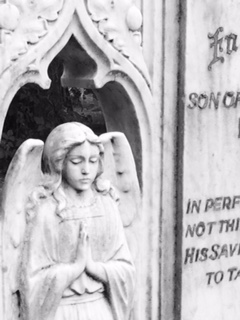Memories of Elsewhere: New Quay, by Charlotte Wührer
/Painting by David Hughes Jones
In these times when many of us are staying very close to home, we have invited Elsewhere contributors to reflect on those places that we cannot reach and yet which occupy our minds…
By Charlotte Wührer:
Elsewhere is a beach. Elsewhere is the beach on which I was buried alive up to the neck, given a tail of sand, a mermaid for a minute until the dog came.
Antonia’s fingers went deathly white after a swim, and back then we couldn’t imagine how miserable it might feel to be so cold while everyone else sweated. Ten years later, we’re sorry we didn’t take her seriously until the rest of her body turned blue.
One year, we squirmed into wetsuits, the old neoprene of some a little cracked, and went out in the kayaks to watch the late afternoon sun. A family of dolphins circled us as my kayak slowly but surely began to sink. The sea teemed with jellyfish.
Another year we drank gin from the bottle sitting on the pier, and it got messy. Perhaps it was that summer we also downed endless pints of ale brewed in whisky casks at a pub quiz before rolling all the way down the hill. From Dylan Thomas’s favourite watering hole into the sea. The bats and stars were more visible there than in any other place. We felt very small, and sobered by the dizziness of not knowing where was under water and where was the night sky.
By day we ate crab meat with lemon juice and black pepper from the shell on the porch bench overlooking the sea. Sometimes we wore straw hats. Sometimes we read books. Sometimes we played games. Sometimes we walked along the clifftops. A lot of the time, we were pretty sunburnt and pretty hungover. Late morning, someone would make the first cup of tea and we’d all get into each other’s beds.
Another year: recovered from the mess, we - the same constellation but with a few additions and a couple of gaping absences - let the seagulls circle the mackerel we’d gutted on the hot September tarmac before the house. Rivers of blood ran downhill past the porches of the other terraced houses, down the patchwork slope of the visitors’ car park, past the tourist knick-knack shop and Annie’s fruit and veg store, down the sand and past our barbecued fish and sandy burger baps, until it was reclaimed by the sea. (Do fish drink the water they swim in?)
The sea that comes after this beach can be seen and heard from the house, which belongs to Sophie’s parents. They were teenagers when they met here in the town, probably on the beach. Now they live both in Swansea and in this little house in New Quay, and I’ve been once a year almost every year since I turned eighteen.
If you know the town, the house stands in the middle of the second row of houses on the north side. It’s not hard to find on googlemaps. Find in street view the purple house with the stained glass porch door. The sash windows are old enough for the glass to have suddenly shattered one windy morning as we slept. The key is in a special place not many people would think to ever look. The house feels a little damp even at the height of the hottest summers.
No one wears shoes in the house or on the short walk down to the beach. City codes of acceptable dress are suspended. The dog wears a superman cape that is also a towel over her eyes. Sophie and I drove down once from Bristol, maybe last year, and it took three hours longer than it should have because there was a swan on one lane of the motorway. Police men wearing fluorescent warning vests stood around it scratching their heads. At the Swansea service station, Sophie’s parents pulled up in their car, handed over a large bag of still-warm welsh cakes, Sophie briefly held the family dog like a baby, and then we drove on belting Savage Garden, more excited to arrive than kids going on a family holiday.
***
Charlotte Wührer is a Berlin-based writer and translator from Newcastle-under-Lyme, England. Her writing appears in numerous online and print publications, including SAND Journal, Ellipsis Zine, and Daddy Magazine. She was shortlisted for the Bristol Short Story Prize and the Cambridge Short Story Prize, and is currently working on a flash fiction novella about place and desire.
David Hughes Jones paints mainly seascapes and landscapes around New Quay in Ceridigion in West Wales and the occasional shipwreck from the past. His subjects are inspired by many years of sailing and messing about in boats, and walking the coastal path. David Hughes Jones Art on Facebook.







